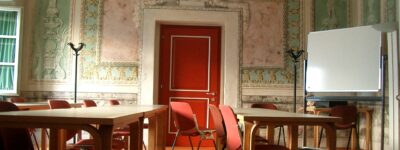Space-like and time-like electromagnetic baryonic transitions

Aula Renzo Leonardi - Villa Tambosi
Str. delle Tabarelle, 286, 38123 Villazzano TN
Villazzano
The study of electromagnetic transitions opens a window into the very nature of the strong interaction. And, indeed, such a study of how a ground-state nucleon transitions to an excited state, over a broad range of q2, will provide keen insight into the evolution of how dynamically-generated masses emerge from the asymptotically-free, nearly massless quarks of perturbative QCD as well as provide information on the ancillary effects from the meson-baryon cloud. The space-like (q2<0) region has been explored more intensively, particularly at JLab, but efforts have also begun in studying the time-like (q2>0) region at GSI. We are living in exciting times whereby near-future prospects exist in extracting high-quality data in both the space-like and time-like regimes (JLab12 and FAIR, for example). Holding the proposed meeting will bring together several disparate experimental and theoretical communities and thereby help in making the very first steps towards a much needed consistent description spanning these two kinematical regimes in q2. The discussions will further include photoproduction measurements (ELSA, JLab, LEPS, and MAMI), wherein the q2=0 point anchors the connection between space-like and time-like regions and meson-beam data (GSI, FAIR, and J-PARC) and amply complements the requisite information for baryon spectroscopy. Finally, studies of in-medium vector meson spectral function modifications, which are related to the electromagnetic transitions in the time-like region will also be addressed.
Organizers
-
Beatrice Ramstein (Institut de Physique Nucléaire d’Orsay)
-
Philip Cole (Idaho State University - Department. of Physics)
-
Andrey Sarantsev (University of Bonn and Gatchina)